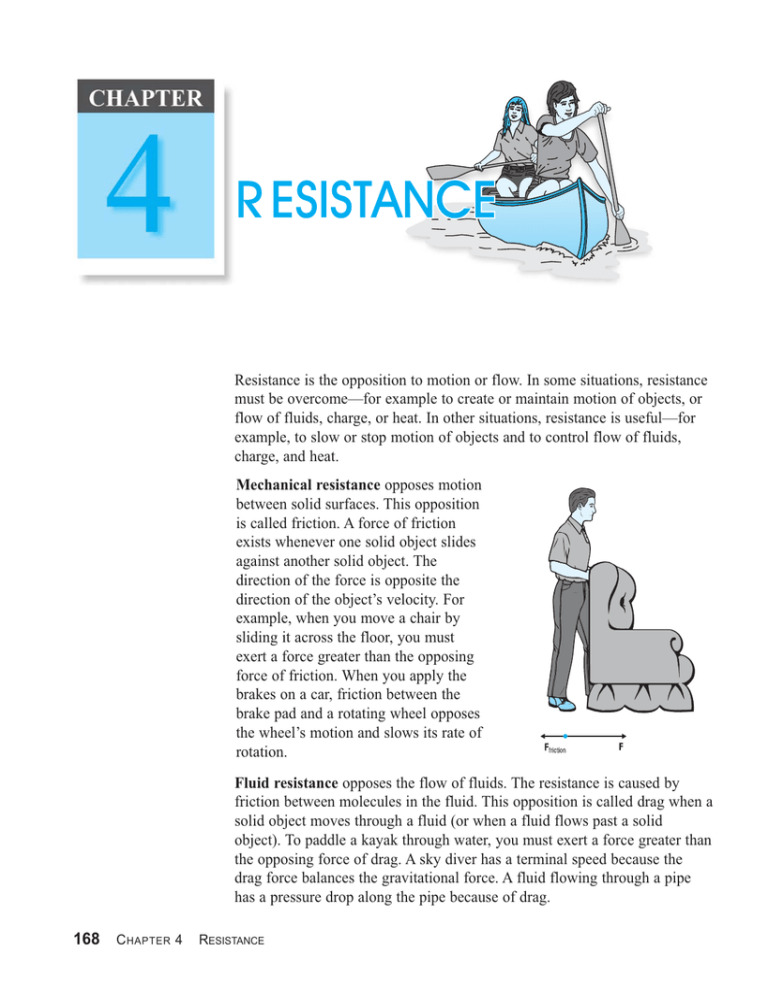Resistance is the opposition to motion or flow. In some situations
advertisement

Resistance is the opposition to motion or flow. In some situations, resistance must be overcome—for example to create or maintain motion of objects, or flow of fluids, charge, or heat. In other situations, resistance is useful—for example, to slow or stop motion of objects and to control flow of fluids, charge, and heat. Mechanical resistance opposes motion between solid surfaces. This opposition is called friction. A force of friction exists whenever one solid object slides against another solid object. The direction of the force is opposite the direction of the object’s velocity. For example, when you move a chair by sliding it across the floor, you must exert a force greater than the opposing force of friction. When you apply the brakes on a car, friction between the brake pad and a rotating wheel opposes the wheel’s motion and slows its rate of rotation. Fluid resistance opposes the flow of fluids. The resistance is caused by friction between molecules in the fluid. This opposition is called drag when a solid object moves through a fluid (or when a fluid flows past a solid object). To paddle a kayak through water, you must exert a force greater than the opposing force of drag. A sky diver has a terminal speed because the drag force balances the gravitational force. A fluid flowing through a pipe has a pressure drop along the pipe because of drag. 168 C HAPTER 4 RESISTANCE Electrical resistance opposes the flow of electric charge, or current. This resistance is caused by electrons colliding with atoms in the conducting path. Some materials have low resistance, and some have high resistance. For example, a toaster has two wires—a power cord and a heating element. The power cord is made of copper. Copper has a low resistance—it is a good conductor of electricity because it has many electrons that can easily move in the wire. But the toaster’s heating element has a high resistance. In this material, electrons are more tightly bound to the atoms and do not move as easily from place to place. When electrons collide with atoms in the heating element, they transfer energy to the atoms. This is the source of heat. Thermal resistance opposes the flow of heat. Some materials have low thermal resistance and some have high resistance. Metals have low thermal resistance—they are good conductors of heat. The metal handle on a pot of boiling water is hot because the pot conducts heat to the handle. You can safely handle the pot if you use a potholder between your hand and the metal. A potholder has a high thermal resistance—it is not a good conductor of heat. C HAPTER 4 RESISTANCE 169



